






| Sanderling (Calidris alba (Pallas, 1764)) |







|
|
Scientific name: Calidris alba (Pallas, 1764) Common name: Sanderling French name: Bécasseau sanderling Order: Charadriiformes Family: Scolopacidae Size: Body size: 20-21 cm; Wingspan: 35-39 cm; Weight: 45-85 g. Habitat: Stony tundra during the nesting period, sandy beaches and estuaries on the sea shores the rest of the time. Food: Insects and larvae during the breeding period, small marine invertebrates (crustaceans, molluscs, annelids, etc.) the rest of the time. Nesting: The nest is a simple small depression in a stony area. There are one or two clutches of about four eggs between May and July. Migration: Sanderlings migrate over long distances. They winter in South America, southern Europe, Africa and Australia. Geographic area: Northern areas around the Arctic Circle. |
The Sanderling has a rather plump silhouette with rather short legs and bill and a large head. In breeding plumage, head, neck, upper breast and upperparts are bright rufous spotted black. The under parts are pure white. The bill is short, straight and thick. The legs are black. The foot has no hind toe, which is a characteristic found only in this species among the waders. In winter plumage the upperparts are pale grey. Face and underparts are white. The lesser coverts, which may be hidden by the white breast feathers, form a blackish patch in the wrist area. They are clearly visible in flight. In flight you can also clearly see a white wing stripe. |
| [To know more about the Sanderling] [Next picture] [Top] |
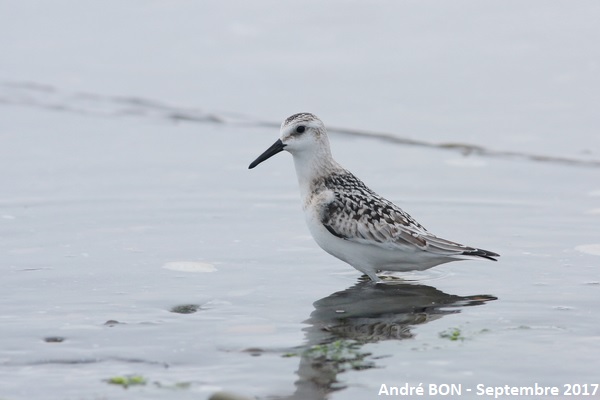
|
Here is a Sanderling in winter plumage. We can see the characteristic black lesser coverts. |
| [To know more about the Sanderling] [Next picture] [Previous picture] [Top] |
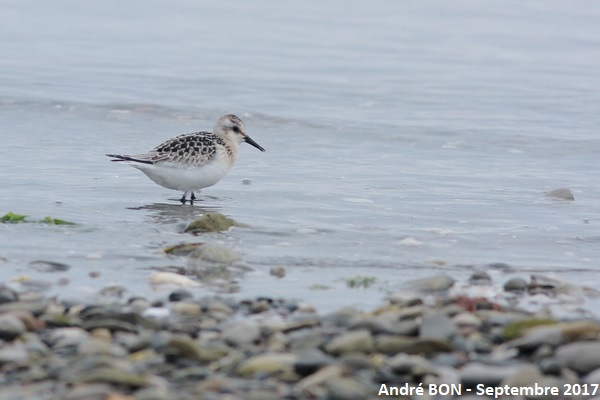
|
The white breast feathers hide the lesser coverts here. |
| [To know more about the Sanderling] [Next picture] [Previous picture] [Top] |
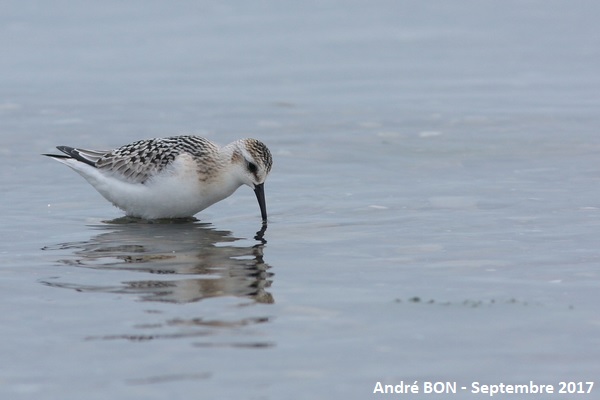
|
Sanderling looking for small marine invertebrates. |
| [To know more about the Sanderling] [Next picture] [Previous picture] [Top] |
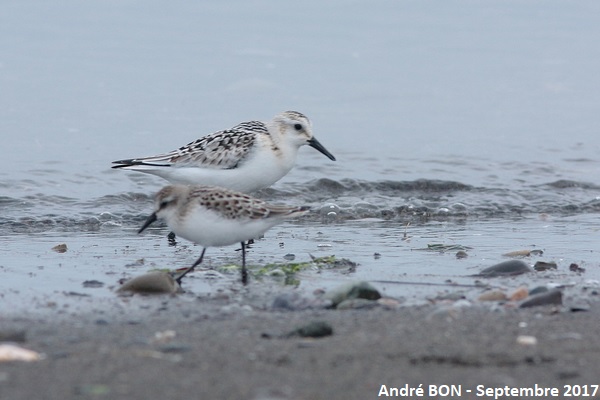
|
I kept this photo to show the difference of size between a Sanderling and a Semipalmated Sandpiper which is much smaller. |
| [To know more about the Sanderling] [Next picture] [Previous picture] [Top] |
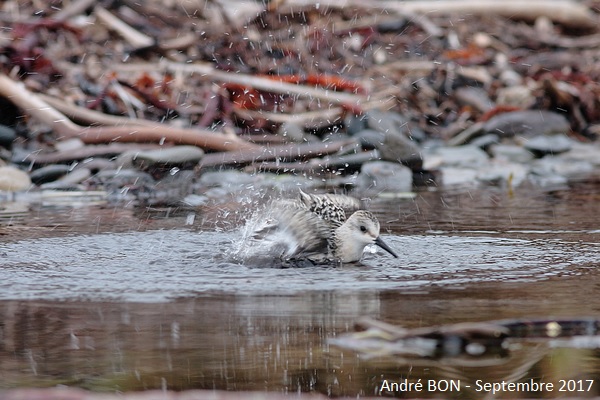
|
Ah, what a pleasure when you're in your bath! |
| [To know more about the Sanderling] [Next picture] [Previous picture] [Top] |
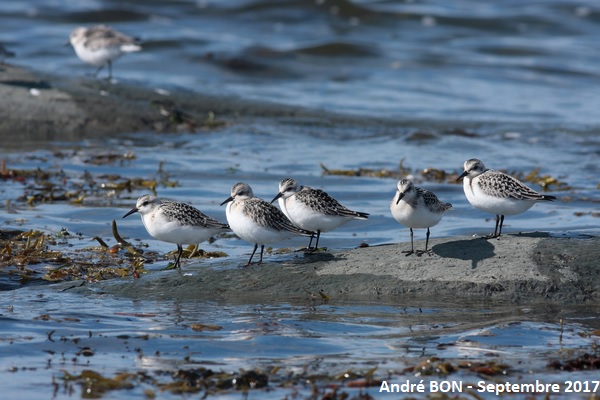
|
This photo shows the absence of the hind toe which is a distinctive characteristic of the Sanderling. |
| [To know more about the Sanderling] [Previous picture] [Top] |
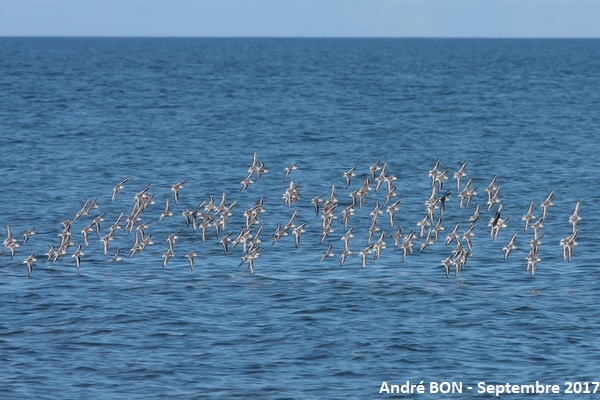
|
Flocks of Sanderlings sometimes fly away as we approach to land a little further and offer us a nice show on this occasion. |